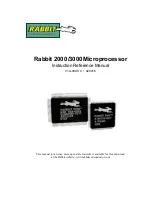
77
Step Command
Remarks
device as the root
bridge.
stp root primary
•
In PVST mode:
stp vlan
vlan-id-list
root primary
•
In MSTP mode:
stp
[
instance instance-list
]
root
primary
function as the root bridge.
Configuring the current device as a secondary root bridge of
a specific spanning tree
Step Command
Remarks
1.
Enter system view.
system-view
N/A
2.
Configure the current
device as a secondary root
bridge.
•
In
STP/RSTP
mode:
stp root secondary
•
In PVST mode:
stp vlan
vlan-id-list
root secondary
•
In MSTP mode:
stp
[
instance instance-list
]
root
secondary
By default, a device does not
function as a secondary root
bridge.
Configuring the device priority
Device priority is a factor in calculating the spanning tree. The priority of a device determines
whether the device can be elected as the root bridge of a spanning tree. A lower value indicates a
higher priority. You can set the priority of a device to a low value to specify the device as the root
bridge of the spanning tree. A spanning tree device can have different priorities in different spanning
trees.
During root bridge selection, if all devices in a spanning tree have the same priority, the one with the
lowest MAC address is selected. You cannot change the priority of a device after it is configured as
the root bridge or as a secondary root bridge.
To configure the priority of a device in a specified MSTI:
Step Command
Remarks
1.
Enter system view.
system-view
N/A
2.
Configure the priority of
the current device.
•
In
STP/RSTP
mode:
stp priority priority
•
In PVST mode:
stp
vlan
vlan-id-list
priority priority
•
In MSTP mode:
stp
[
instance
instance-list
]
priority
priority
The default setting is 32768.
Configuring the maximum hops of an MST region
Restrict the region size by setting the maximum hops of an MST region. The hop limit configured on
the regional root bridge is used as the hop limit for the MST region.
Содержание H3C S7500E-X
Страница 70: ...57 ...
















































